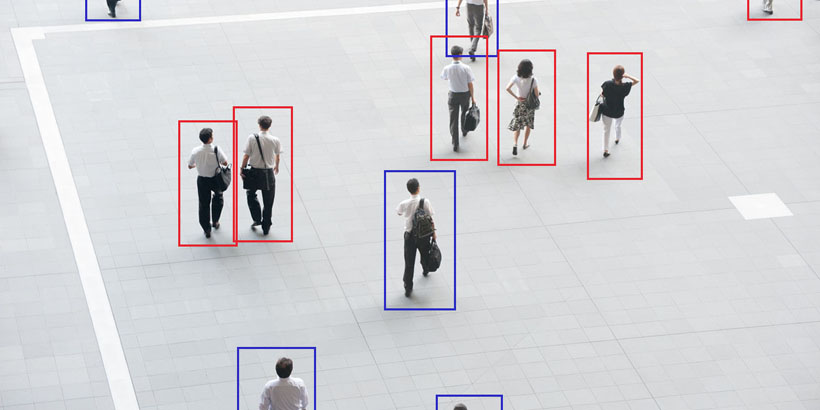 Whilst Governments around the world have taken slightly differing approaches to managing shared spaces in light of the COVID-19 pandemic, all approaches include one common measure: the need for appropriate social distancing. It has been proven that maintaining distance between people reduces the level of transmission, as breath droplets are a common method of spreading the virus. As such, social distancing remains one of the more important steps for businesses and organisations looking to return to operations.
Whilst Governments around the world have taken slightly differing approaches to managing shared spaces in light of the COVID-19 pandemic, all approaches include one common measure: the need for appropriate social distancing. It has been proven that maintaining distance between people reduces the level of transmission, as breath droplets are a common method of spreading the virus. As such, social distancing remains one of the more important steps for businesses and organisations looking to return to operations.
Over the period of the current pandemic, one measure has been stressed above all others: social distancing. While the collection of data relating to transmission has allowed scientists and health professionals to better predict circumstances during which the risk of infection is reduced, the risk mitigation of maintaining distance between people remains pivotal to control of the virus.
While the theory of social distancing is simple, maintaining and managing it in shared spaces is not always straightforward. It is a task which has, thus far, predominantly been managed by personnel. This fact alone makes the implementation of correct social distancing a challenge, for a number of reasons.
Firstly, staff who are often untrained in issues of people management are required to advise and guide others with regard to social distancing requirements. There is a risk that if they fear confrontation or conflict, they may ignore breeches of the regulations to avoid unpleasant situations. Additionally, there is a need for those implementing the regulations to remain focused on the activities of many people, even while dealing with enquiries from others who may not understand the requirements and specifics in a given location.
Another potential problem with the manual management of social distancing is the reliance on feedback from others to fully understand the situation. For example, if a member of staff is monitoring occupancy, they might be able to manage flow through the space on a one-in, one-out basis once an occupancy level is reached, but maintaining accuracy over a period of time is a challenge. Also, social distancing is not solely reliant on the number of people in a space, but also where they are congregating. For example, a popular aisle in a retail space or a coffee machine in an office could create social distancing violations even if the overall occupancy is managed.
One final challenge is that the manual management of social distancing exposes those controlling the flow of people to a greater risk, as they are having to interact with large numbers of people. As such, it places an increased onus on the business or organisation to ensure it meets its duty of care.
For many businesses and organisations, video technology can deliver a superior method for managing social distancing. It provides an accurate level of performance and can cover large and complex applications, using data from different cameras to assess conditions across the site. It also eliminates potential conflict with customers and/or visitors, and ensures staff interactions with others are minimised.
Implementing Social Distancing
The increased use of AI-based deep learning video analytics technology has allowed the creation of a Social Distance Measuring application which, in a COVID-19 affected world, helps businesses and organisations implement stringent social distancing policies. The solution, available via Hanwha Techwin, has been developed by A.I Tech, Hanwha Techwin’s award-winning technology partner.
The server-based Social Distance Measuring application uses advanced algorithms to accurately measure the distance between people in a viewed area, and generates a notification if social distancing rules are not being complied with. Users can also be alerted if the number of people within an area exceeds a specified threshold, adding the benefit of delivering real-time occupancy management.
Compatible with the full range of Wisenet cameras, the application is ideal for use in workplaces such as offices and factories, as well as a wide range of other indoor locations including art galleries, museum and places of worship. However, the Social Distance Measuring application performs equally well in outdoor environments and offers a social distancing implementation tool for public transport environments and public spaces where local authorities have a need to monitor and manage the flow of people, or control crowds which may gather in popular locations.
The application can be seamlessly integrated with Wisenet WAVE VMS, or users have the option of using the web-based AI Tech dashboard to collect, aggregate, view and act on alarms and events from multiple camera streams. The data can also be visualised through charts, tables and images, whilst data is exported as .csv, .jpeg or .pdf files for integration with third-party systems. The dashboard is fully customisable, allowing it to be adapted to meet specific operational requirements. The data can be accessed via a PC, smartphone or tablet.
‘In the New Normal world, there are countless businesses who wish to give their colleagues, customers and visitors confidence that the need for a safe distance between them is being respected,; stated Uri Guterman, Head of Product and Marketing for Hanwha Techwin Europe.
‘The Social Distance Measuring application will help them do so and perfectly complements the capabilities of our licence-free Occupancy Monitoring solution which is designed to be installed at entrances, and accurately counts the number of people entering or leaving a building. Both are part of a suite of COVID-19 related solutions offered by Hanwha Techwin, which also includes a Face Mask Detection application.’

